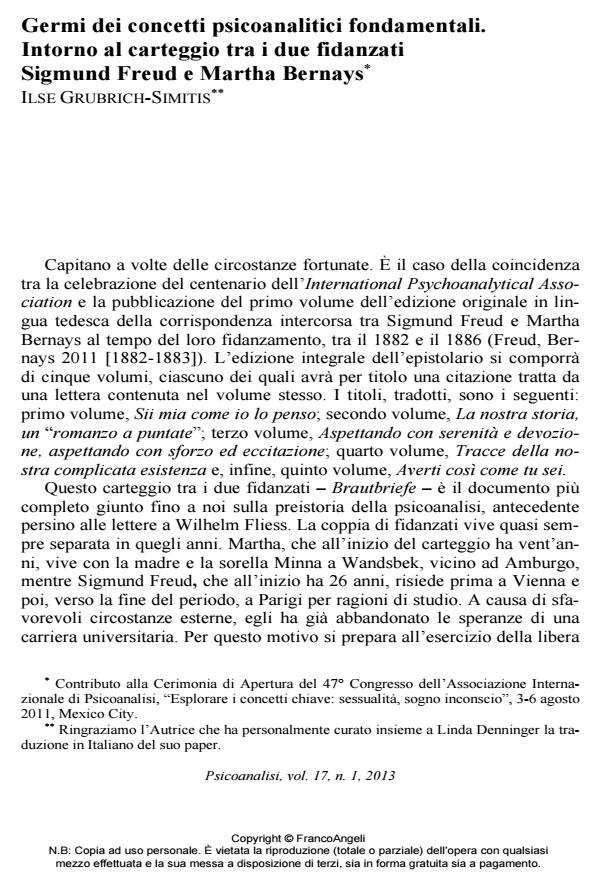Seeds of core psychoanalytic concepts. On the courtship letters of Sigmund Freud and Martha Bernays
Journal title PSICOANALISI
Author/s Ilse Grubrich-Simitis
Publishing Year 2013 Issue 2013/1
Language Italian Pages 19 P. 11-29 File size 420 KB
DOI 10.3280/PSI2013-001002
DOI is like a bar code for intellectual property: to have more infomation
click here
Below, you can see the article first page
If you want to buy this article in PDF format, you can do it, following the instructions to buy download credits

FrancoAngeli is member of Publishers International Linking Association, Inc (PILA), a not-for-profit association which run the CrossRef service enabling links to and from online scholarly content.
The letters exchanged between Sigmund Freud and Martha Bernays during their engagement from 1882 to 1886, is the most extensive and most intimate Freud correspondence. In the first part of the essay Ilse Grubrich-Simitis shows that these early letters, including those written by Martha, already contain seeds of core psychoanalytic concepts as well as of the psychoanalytic method. In the second part two portraits emerge into the light: Martha Bernays takes the stage for the first time, while a fascinatingly novel and complex image of the young Freud is revealed.
Keywords: Sexuality, dream, conscious and unconscious, auto-analysis
- "Intanto rimaniamo uniti". Sigmund Freud: lettere ai figli Adolfo Pazzagli, in PSICOANALISI 1/2015 pp.25
DOI: 10.3280/PSI2015-001002
Ilse Grubrich-Simitis, Germi dei concetti psicoanalitici fondamentali. Intorno al carteggio tra i due fidanzati Sigmund Freud e Martha Bernays in "PSICOANALISI" 1/2013, pp 11-29, DOI: 10.3280/PSI2013-001002